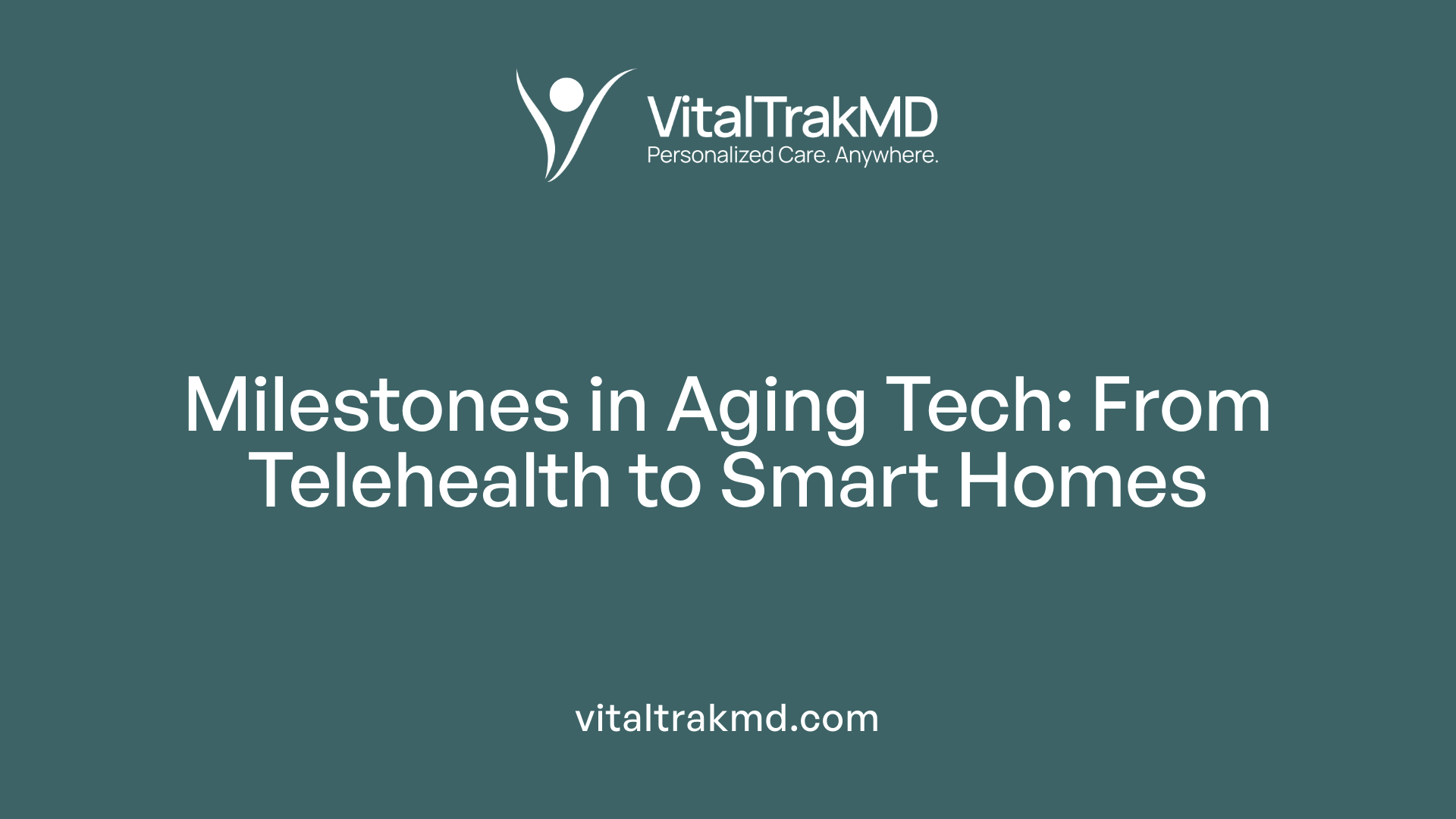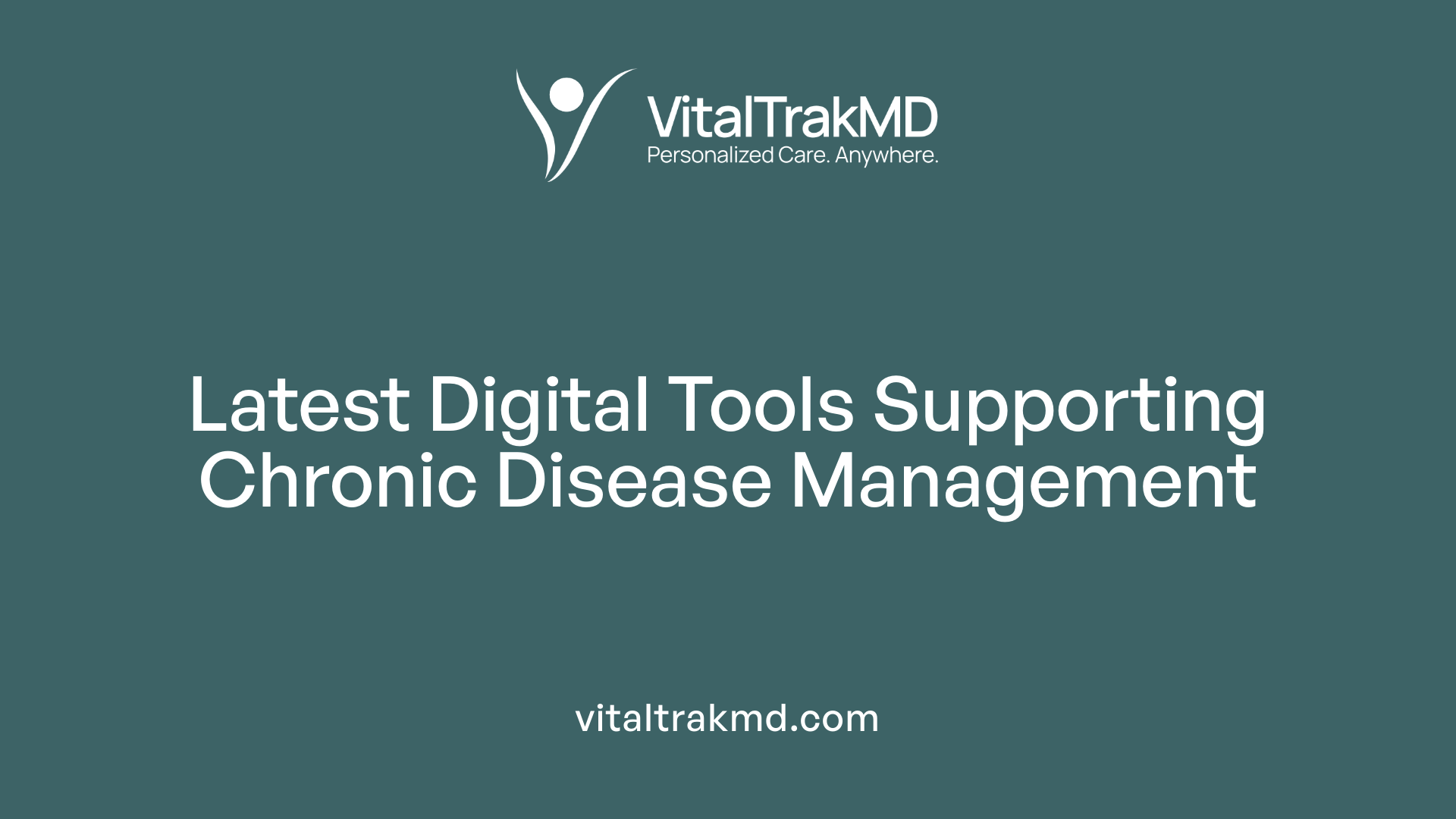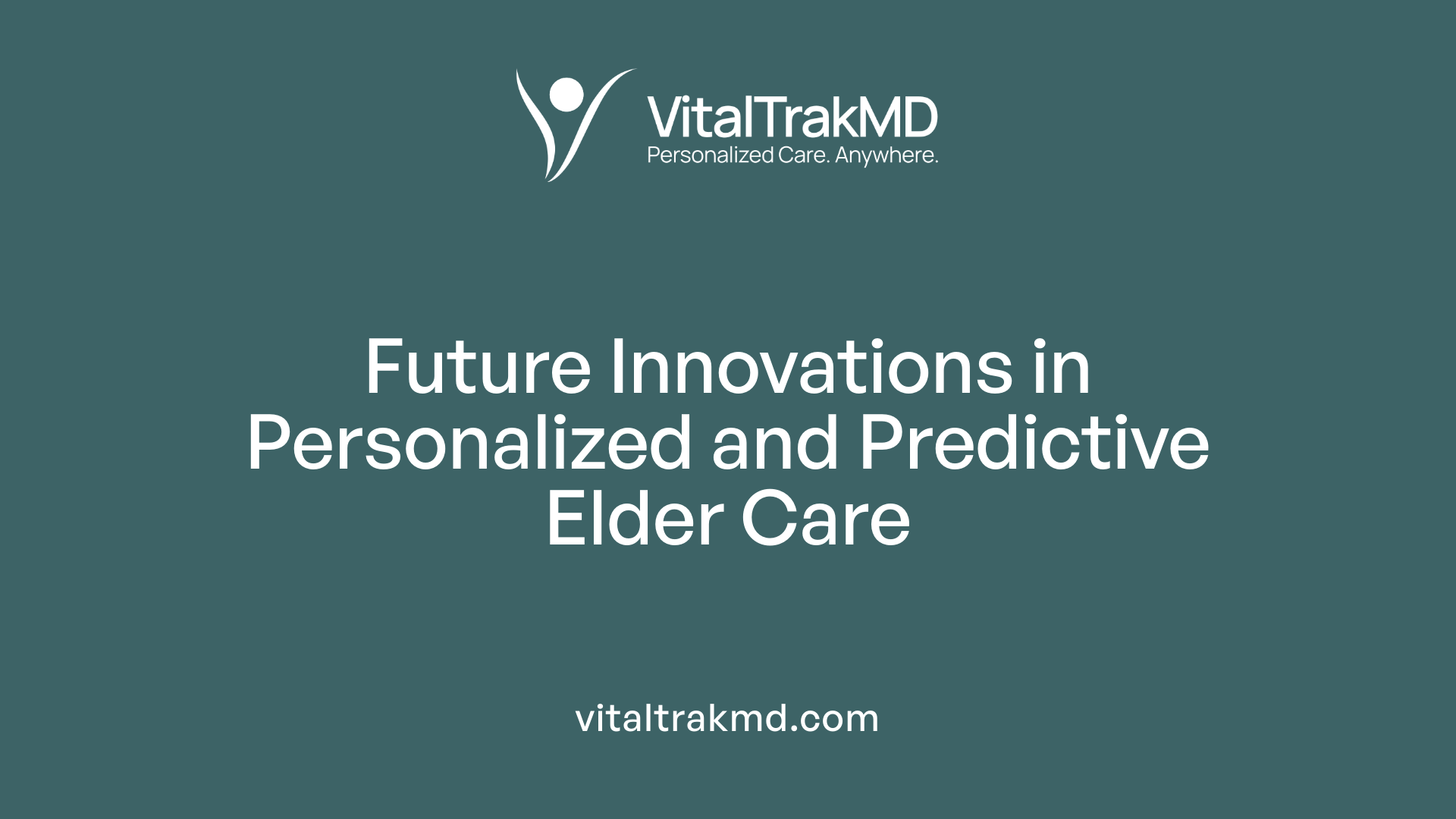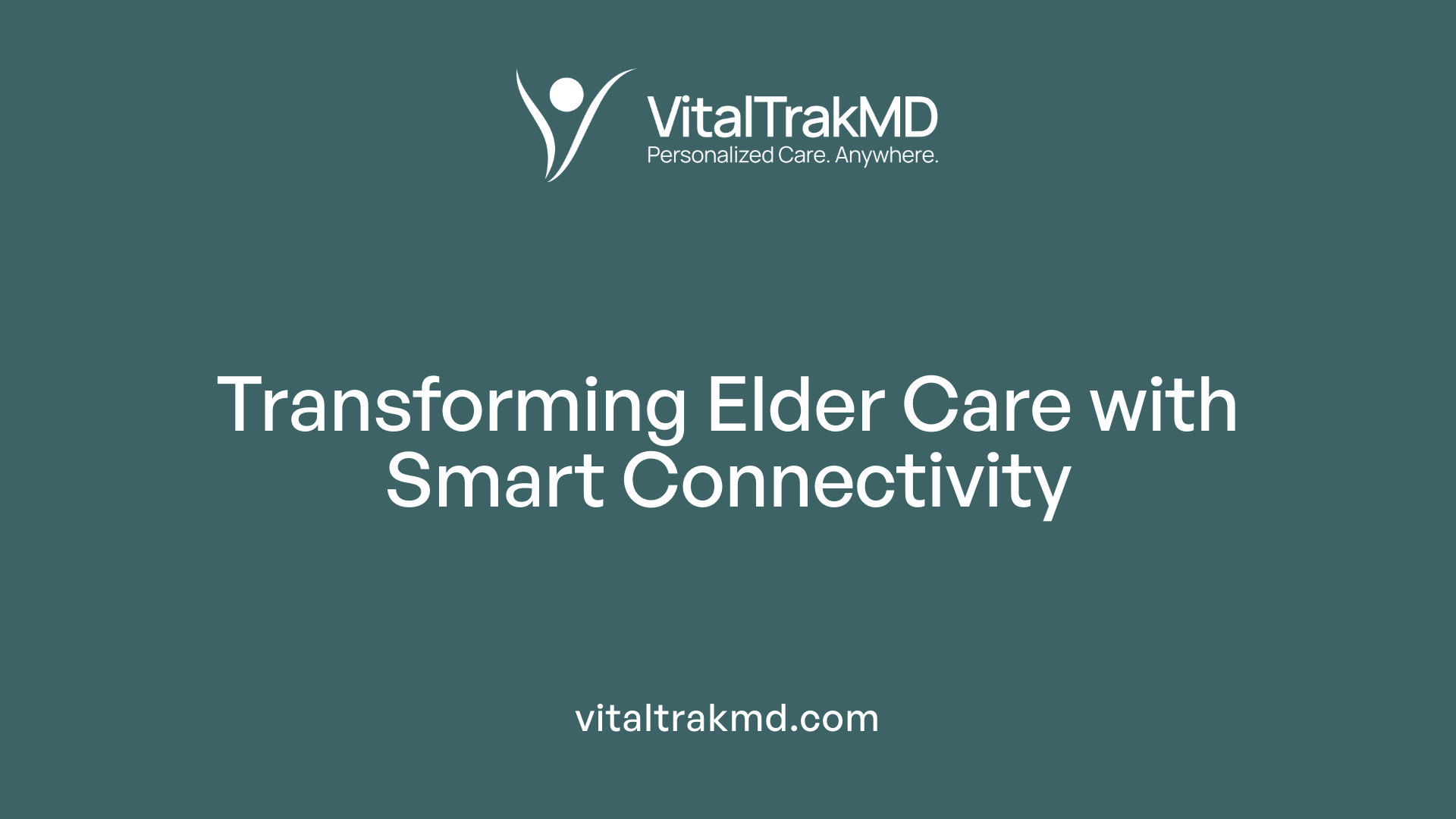Future Trends in Tech-Enabled Chronic Care for Aging Adults

Charting a Future of Independent and Connected Aging
The landscape of eldercare is undergoing a seismic shift driven by rapid technological innovations. Over the past quarter-century, advancements in medical devices, mobile applications, telemedicine, and artificial intelligence have redefined how aging populations manage chronic conditions and maintain independence. As the global demographic trend points toward a soaring number of older adults, these technologies promise not only to enhance health outcomes but also to uphold the dignity and autonomy of seniors. This article explores the emerging technologies, their integration into care models, and the future trajectories shaping the realm of tech-enabled chronic care for aging adults.
The Evolution of Technology in Geriatric Care

How do connected care and digital health tools impact aging populations?
Connected care and digital health tools have brought transformative changes to the way healthcare is delivered to older adults. They build bridges between patients and healthcare providers through real-time data sharing, remote monitoring, and virtual consultations. Devices like wearables track vital signs such as heart rate, blood pressure, and activity levels continuously, allowing for early detection of health issues and prompt medical interventions. Telehealth platforms reduce the need for physical visits, making healthcare more accessible, especially in rural or mobility-challenged populations.
These technologies also bolster aging in place by supporting independence. Digital health portals, e-prescriptions, and online appointment systems empower older adults to manage their health proactively. Moreover, social connectivity tools like video calls and social media help combat loneliness and foster community engagement. While many older adults actively use these technologies, challenges remain regarding digital literacy and equitable access. Ensuring that these tools are user-friendly and affordable is vital for maximizing their benefits.
The widespread adoption of digital health solutions contributes significantly to improved health outcomes and quality of life among seniors, though ongoing efforts are needed to bridge digital divides and support lifelong digital inclusion.
How do digital solutions enhance autonomy, health, and social connectedness among aging adults?
Digital innovations play a crucial role in enhancing independence among older adults by enabling them to monitor their health and stay connected socially. Remote health monitoring devices can alert users and providers to health issues before they escalate, supporting the management of chronic diseases such as diabetes, hypertension, and heart conditions. Assistive technologies—like intelligent sensors, voice-activated devices, and automated systems—help with daily routines such as medication management, fall detection, and safety alerts.
Furthermore, digital platforms facilitate social engagement. Virtual reality experiences and user-friendly social apps create opportunities for emotional and social interaction, even when physical mobility is limited. Video conferencing allows older adults to stay connected with family, friends, and community groups, reducing feelings of isolation.
Training programs focused on improving digital literacy, customized to individual needs, enhance older adults' confidence and competence in using these technologies. Community-centered initiatives ensure accessibility and inclusivity, promoting equitable benefits. Overall, these digital solutions bolster autonomy, improve health outcomes, and foster stronger social bonds, thereby enriching the lives of aging individuals.
Historical milestones in technological innovations for elder care
| Year | Milestone | Description |
|---|---|---|
| 1990s | Introduction of basic telehealth | Early systems enabled remote consultations via telephone and fax. |
| 2000s | Growth of mobile health apps | The proliferation of smartphones led to apps for fitness, medication reminders, and health tracking. |
| 2010s | Development of remote patient monitoring | Wearable devices and IoT technology allowed continuous health data collection. |
| 2015 | Rise of AI and predictive analytics | Algorithms began analyzing health data to forecast health risks and personalize care plans. |
| 2020s | Expansion of smart home and assistive tech | Sensors, voice assistants, and robotics became integral for safety and independence. |
| Future (2050) | Integration of robotics, autonomous transport, and virtual care | Technologies expected to advance to support seamless, personalized aging support systems. |
Advanced medical devices
- Wearable biosensors: Track vital signs and activity.
- Remote monitoring systems: Share data with healthcare providers instantly.
- Smart implants: Detect health anomalies early.
Mobile apps and telehealth
- Health tracking apps: Monitor chronic conditions, medication schedules.
- Telemedicine platforms: Provide virtual doctor visits, reduce travel needs.
- Digital health portals: Access health records, communicate with providers.
Data on Digital Health Technologies
| Indicator | Percentage | Description |
|---|---|---|
| Mobile health apps | ~350,000 | Available for health management, fitness, nutrition |
| IoT connected devices | 18.8 billion | Devices for health, safety, home automation |
| AgeTech companies | Nearly 3,000 | Firms innovating in eldercare technology |
| Older adults' device ownership | 91% own smartphones | Most common tech for personal health |
| Use of smart devices | >60% | For security, utilities, safety devices |
| Engagement with health apps | 71% | Use of health-tracking applications |
Future prospects in aging tech
Future innovations are poised to bolster predictive analytics and personalized healthcare, leveraging big data. International collaboration is vital to bridge resource gaps globally, ensuring equitable access to advanced eldercare technologies. Wearable health monitors, AI-driven alert systems, and autonomous transportation are expected to become commonplace, supporting older adults' independence.
Visual overview of technological impacts
| Technology | Impact Area | Description | Future Outlook |
|---|---|---|---|
| Wearable health devices | Health Monitoring | Early detection, chronic disease management | Expanded capabilities, AI integration |
| Telehealth | Access to Care | Virtual consultations reduce travel | Widespread adoption, enhanced user interfaces |
| Smart home tech | Safety & Independence | Fall detection, medication reminders | Fully autonomous, conversational systems |
| Robotics | Assistance & Socialization | Support daily routines, companionship | Advanced social robots, rehabilitation aids |
| Digital communication | Social Connectedness | Reduce loneliness, promote engagement | Virtual reality for therapy and socialization |
This rapid evolution in healthcare technology aims to promote an active, independent, and connected aging population, ensuring that eldercare is not only more efficient but also more compassionate and inclusive.
The Current State of Digital Health Technologies

What are the latest technological innovations in chronic care for aging adults?
Recent years have seen remarkable progress in tools and systems designed to support chronic care for older adults. Advanced wearable health devices, such as fitness trackers and remote ECG monitors, help track vital signs like heart rate and blood pressure continuously. These devices often share data in real-time with healthcare providers, enabling early detection of health issues and timely interventions. Artificial Intelligence (AI) and data analytics further enhance chronic care by analyzing sensor data, health records, and activity patterns. For example, platforms like UC Davis's Interactive Care Platform (I-Care) offer cognitive support through task management, communication, and brain health activities tailored to seniors with cognitive impairments. Sensor technologies are also developing rapidly. Vibration sensors embedded unobtrusively in home environments monitor movement, medication adherence, and fall risks, allowing for preventive safety measures. Smart home features such as voice-activated controls, automated lighting, and fall detection systems increase independence while ensuring safety. Assistive robotics and smart home technologies are increasingly being adopted to bridge staffing shortages and promote safety. These innovations collectively aim to improve quality of life, support aging in place, and address the complex needs of an expanding senior population through scalable and user-friendly solutions.
What advancements have been made in telemedicine, smart home devices, and robotics for elder care?
Telemedicine has experienced significant growth, especially during the COVID-19 pandemic. Modern platforms are now more user-friendly, enabling easy access to primary and specialty care via virtual appointments. Wearable health monitoring devices, like ECG patches and blood pressure cuffs, support remote health management and emergency alerts. Smart home devices contribute significantly to elder safety and independence. Sensors placed throughout the home can detect falls, monitor activity levels, and alert caregivers or emergency services if necessary. Ambient assisted living technologies, including voice assistants and automated security systems, allow older adults to manage routines comfortably and securely. Robotics have advanced from mere assistive tools to companions that promote mental health and social interaction. Assistive robots such as ElliQ provide conversation, reminders, and engagement, helping reduce feelings of loneliness in seniors. Other robots are designed for physical support, including exoskeletons and mobility aids, which assist with walking or rehabilitation. The rapid integration of AI with robotics and telehealth enhances remote diagnostics, decision-making, and personalized care. During the pandemic, these technologies reduced caregiver burden, minimized exposure risk, and improved elder safety. However, ethical considerations—such as privacy, autonomy, and human connection—must be carefully addressed. Cost, acceptance, and access remain challenges to equitable deployment, but ongoing innovation continues to transform elder care positively.
Shaping the Future of Elder Care with Cutting-Edge Tools

What are the key trends shaping the integration of technology into chronic disease management for seniors?
Over the past 25 years, technological innovations have revolutionized how chronic conditions are managed among older adults. Wearable health monitors, such as fitness trackers and ECG devices, enable continuous, real-time tracking of vital signs, providing valuable data to healthcare providers. Telehealth platforms have expanded access to primary and specialist care, reducing the need for physical visits and lowering exposure risks, especially during events like the COVID-19 pandemic.
Artificial intelligence (AI) and data analytics are increasingly used to develop predictive models that anticipate health deterioration and personalize treatment plans. Assistive technologies like smart pillboxes, medication reminders, and social robots support adherence to therapies and enhance cognitive health. Digital health solutions, including mobile apps focused on health management and social engagement, are encouraging medication adherence, mental wellness, and social connectivity.
Despite these advances, challenges persist such as concerns about data privacy, user acceptance, and unequal access. Efforts to address these issues involve designing user-friendly interfaces, improving digital literacy among seniors, and establishing ethical frameworks. The goal is to enhance health outcomes, promote independence, and improve overall quality of life, making technology a vital part of chronic disease management for older adults.
What are the future development trajectories in tech-enabled elder care?
Looking ahead, elder care technology will likely evolve towards even more integrated and personalized solutions. Artificial intelligence and machine learning will continue to advance, enabling smarter predictive analytics and tailored health interventions based on sensor data, wearable devices, and health records.
Smart home technologies—including voice-activated assistants, environmental sensors, and robotic support—will become more sophisticated, providing seamless safety and comfort features. These innovations will help detect falls, monitor routines, and automate environmental controls, fostering safer independent living.
Telehealth services will expand beyond traditional virtual doctor visits to encompass mental health support, remote diagnostics, and continuous health monitoring. Community-based wellness programs integrating fitness, nutrition, and social activities, supported by digital platforms, will become central to holistic elder care.
Policy development and sustainable design principles will play crucial roles in ensuring these technologies are accessible, scalable, and environmentally responsible, ultimately transforming elder care.
How are innovations transforming aging in place and independent living?
Technological breakthroughs are significantly enhancing aging in place by integrating smart home systems, remote health monitoring, and user-centered digital platforms. Systems like the I-Care platform support cognitive health through task management and communication tools tailored for older adults.
Sensors and unobtrusive monitoring devices track vital signs, detect falls, and observe daily routines, providing early warning signs to caregivers and healthcare providers. AI-driven analytics analyze this data to detect subtle health changes, enabling proactive interventions that can prevent hospitalizations.
Designing technologies with the input of older adults ensures solutions are useful, usable, and acceptable, addressing common barriers such as usability and digital literacy. These innovations promote safer, healthier, and more connected independent living environments, supporting aging populations to stay in their homes longer.
What are current research directions and future prospects in health technology for senior care?
Research in senior health technology centers on creating integrated digital ecosystems. Projects like UC Davis’s I-Care system exemplify combining task management, communication, and cognitive support tools tailored to older adults.
Advances in unobtrusive sensors, wearable health devices, and AI-driven diagnostic platforms are facilitating early detection of health issues, improving personalized care, and reducing hospital reliance. Telehealth and remote monitoring expand healthcare access, especially in rural or underserved areas.
Future developments include robotic companions that offer social and physical support, virtual reality (VR) systems for cognitive engagement, and blockchain technology for secure data management. Regulatory frameworks and ethical standards will be essential for ensuring safe, equitable, and effective deployment.
What is the overall outlook for the development of tech-enabled care models for elderly populations?
The future of elder care increasingly hinges on the seamless integration of digital health tools. Advances in AI, robotics, smart home tech, telemedicine, wearables, and immersive realities promise a future where older adults can maintain independence, monitor health proactively, and stay socially connected.
While these technologies will significantly enhance quality of life, a human-centered approach remains crucial. Incorporating older adults’ feedback during development fosters trust and usability, addressing concerns like privacy and digital literacy.
Challenges such as the digital divide and ethical considerations require ongoing attention. However, proactive policies, investments, and collaboration across sectors will support scalable and inclusive tech-enabled care models. Overall, these innovations are poised to redefine aging, making it safer, healthier, and more connected.
Integrating Smart, Connected, and Autonomous Technologies

How do connected care and digital health tools impact aging populations?
Connected care and digital health innovations are transforming the way older adults manage their health and maintain independence. These technologies facilitate real-time health monitoring through wearable devices and remote sensors, allowing healthcare providers to track vital signs such as heart rate, blood pressure, and oxygen levels continuously. Telemedicine platforms make it easier for seniors to access primary and specialist care from the comfort of their homes, reducing travel burdens and exposure risks, especially during health crises like the COVID-19 pandemic.
Moreover, digital tools support social engagement by enabling video calls, social media use, and virtual activities, which help combat loneliness and promote emotional health. These platforms also improve access to health information, medication management, and appointment scheduling, fostering a more proactive approach to health.
Despite their benefits, the adoption of these technologies depends on factors like digital literacy, education, and infrastructure. Many older adults actively use patient portals, e-prescriptions, and online booking systems, demonstrating their potential to revolutionize elder care. Still, addressing barriers such as digital divide issues and privacy concerns remains crucial to maximizing their impact on aging populations.
How do digital solutions enhance autonomy, health, and social connectedness among aging adults?
Digital solutions empower older adults to lead more autonomous lives through innovative tools that support health and social engagement. Remote health monitoring devices, such as ECG patches and medication reminders, enable continuous oversight of health conditions, reducing hospital readmissions and enabling timely interventions.
Assistive technologies like smart home sensors detect falls, monitor routines, and alert caregivers to potential emergencies, ensuring safety and independence at home. Electronic health records and telehealth expand medical access, making routine care more manageable, especially for those with mobility limitations.
Social connectivity is amplified through video conferencing, social media, and VR platforms, which foster interactions with family, friends, and communities. These tools reduce isolation and loneliness, particularly for seniors with chronic illnesses.
Educational programs and user-friendly interfaces address challenges like sensory deficits and cognitive decline, increasing digital confidence and engagement. Community-driven initiatives help adapt these technologies to meet diverse needs, promoting self-efficacy and ensuring no one is left behind.
Ultimately, digital solutions support healthier aging by maintaining independence, improving health outcomes, and facilitating meaningful social bonds, thereby enriching quality of life.
Interoperability and data sharing
Effective integration of smart, connected systems depends on interoperability—the ability of different devices and platforms to communicate seamlessly. This requires open standards and robust data-sharing frameworks that allow health data collected from wearables, home sensors, and telehealth services to be consolidated into comprehensive health records.
Privacy and security are paramount, ensuring that sensitive health information remains protected while enabling timely data exchange among providers, patients, and caregivers. Advanced data analytics utilizing linked datasets can generate predictive insights, aiding early diagnosis and personalized treatment plans.
Autonomous transportation solutions
Autonomous vehicles and mobility aids are poised to redefine transportation for older adults, enhancing independence and access to care. Self-driving shuttles and cars can provide reliable transit options, reducing barriers related to driving limitations.
Specialized autonomous transport may support grocery runs, medical appointments, and social outings, integrating with broader care ecosystems. Safety features and user-centric interfaces are designed to ensure secure and easy operation, encouraging adoption among seniors.
Connected care ecosystems
A comprehensive connected care ecosystem integrates various digital health technologies, including wearables, smart home devices, telehealth, and autonomous transport, into a unified network. This ecosystem enables continuous monitoring, data exchange, and timely interventions.
Stakeholders—healthcare providers, payors, policymakers, and older adults—collaborate to build infrastructure that supports seamless connectivity, equitable access, and sustainable funding models. Such systems foster proactive health management, reduce hospitalization rates, and promote aging in place.
| Aspect | Description | Example Technologies |
|---|---|---|
| Interoperability | Seamless data sharing between devices and platforms | Open standards, health data portals |
| Autonomous solutions | Self-driving vehicles, robotic assistance for mobility | Autonomous shuttles, robotic caregiving bots |
| Connected ecosystems | Integrated digital health networks | Wearables, telehealth, smart home systems |
As technology advances, the integration of these components will be vital to supporting older adults' independence, safety, and social connectedness well into the future.
Towards a Holistic and Inclusive Future for Elder Care
As technological innovations continue to evolve at a rapid pace, the future of chronic care for aging adults promises a more proactive, personalized, and connected ecosystem. The integration of AI, robotics, telehealth, and smart home technologies will not only enhance safety and health outcomes but also foster a sense of community and independence among seniors. Collaborations among policymakers, technologists, healthcare providers, and older adults themselves are crucial to addressing access disparities and ensuring that these advancements are inclusive and respectful of individual needs and preferences. The trajectory points towards a future where aging in place becomes more feasible, desirable, and enriching—transforming aging from a period of vulnerability into an era of opportunity, empowerment, and dignity.
References
- Development Trends and Prospects of Technology-Based ...
- The Future of Connected Care: Enabling Healthy Longevity ...
- Aging-in-Place Is Driving Innovation in Tech and Healthcare
- How Technology will Transform Senior Care in 2025
- The Evolution of Elder Care: Trends Shaping the Future
- Tech Adoption Continues Among Older Adults
- Innovative Technologies Transforming Senior Care & Living
- Envisioning the Future for Older Adults: Autonomy, ...
- The Evolution of Elder Care: Trends Shaping the Future
Recent articles
Want to Feel Better and Live Healthier?
Join hundreds of patients taking control of their health with personalized care that fits their life – not the other way around.
Rated 4.8/5 by 32+ customers







